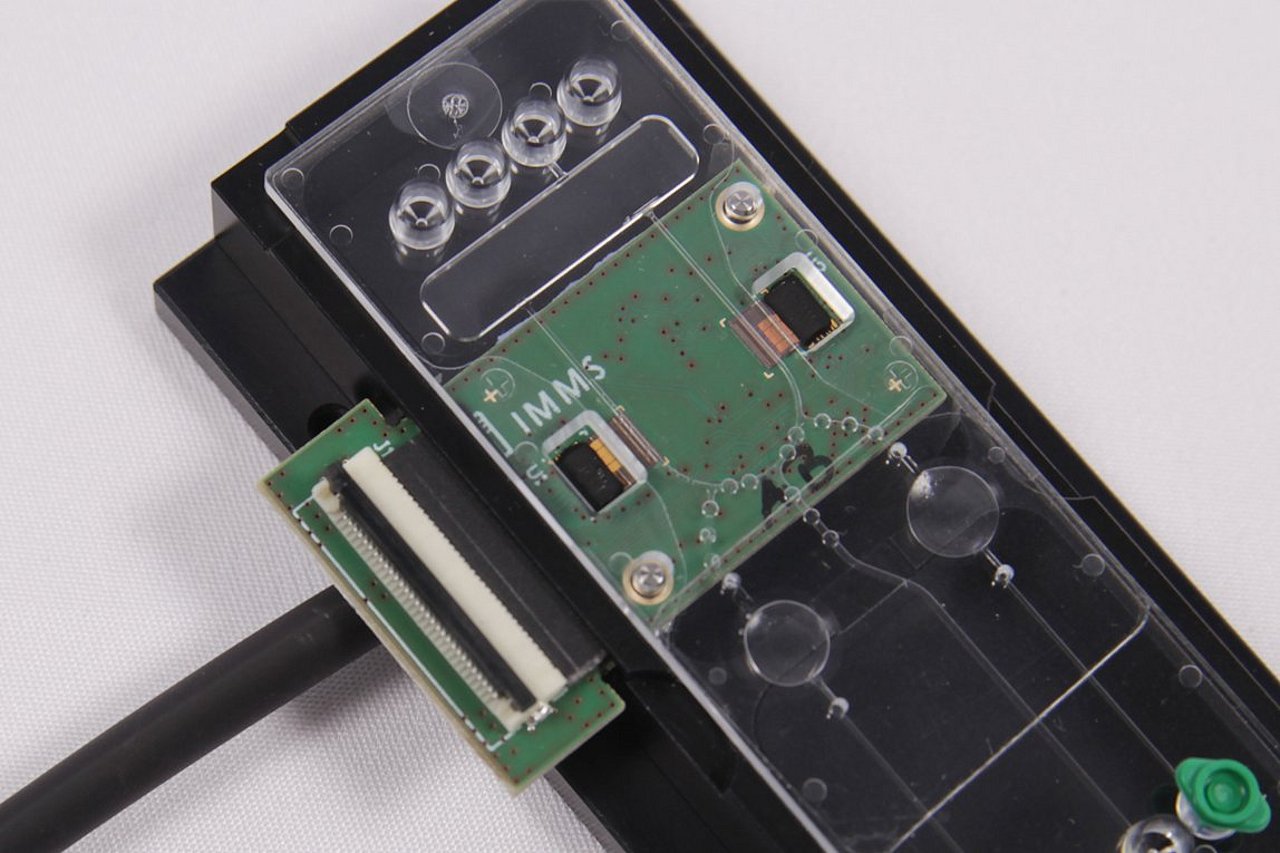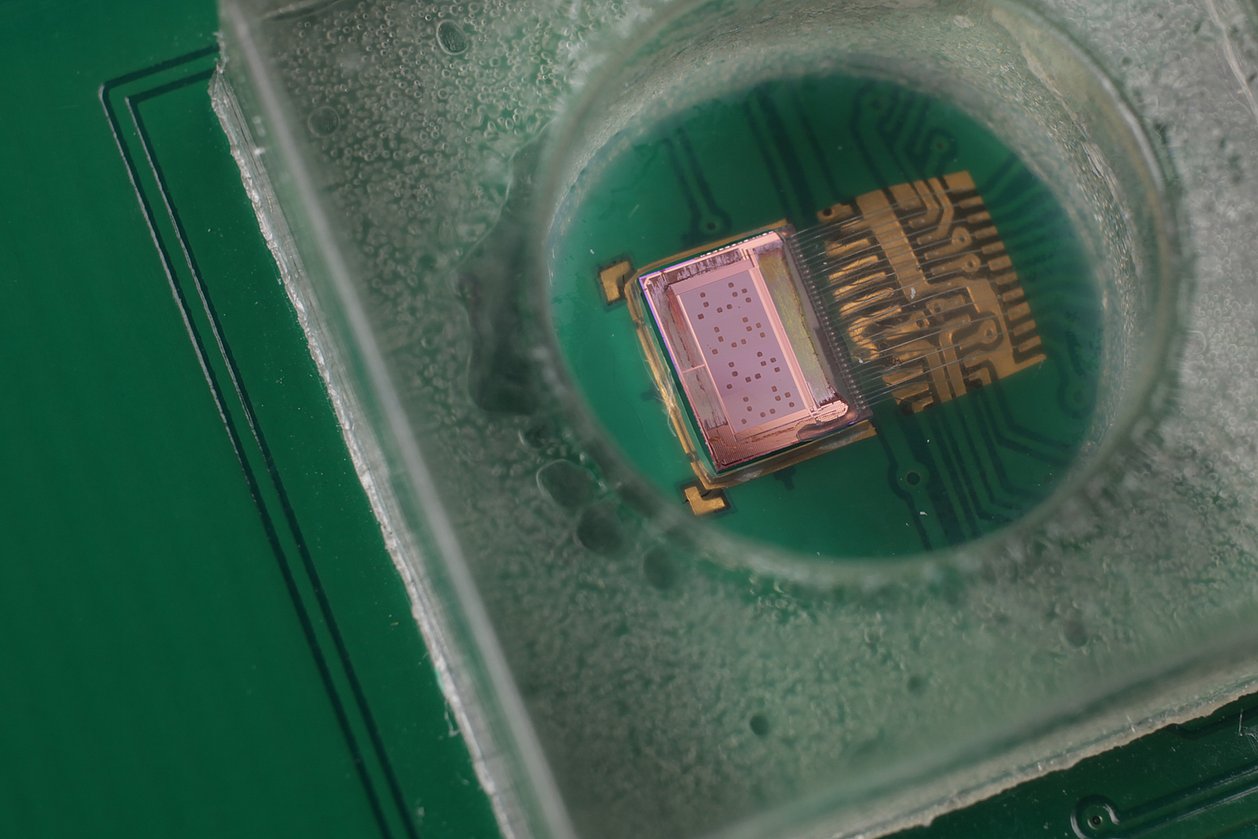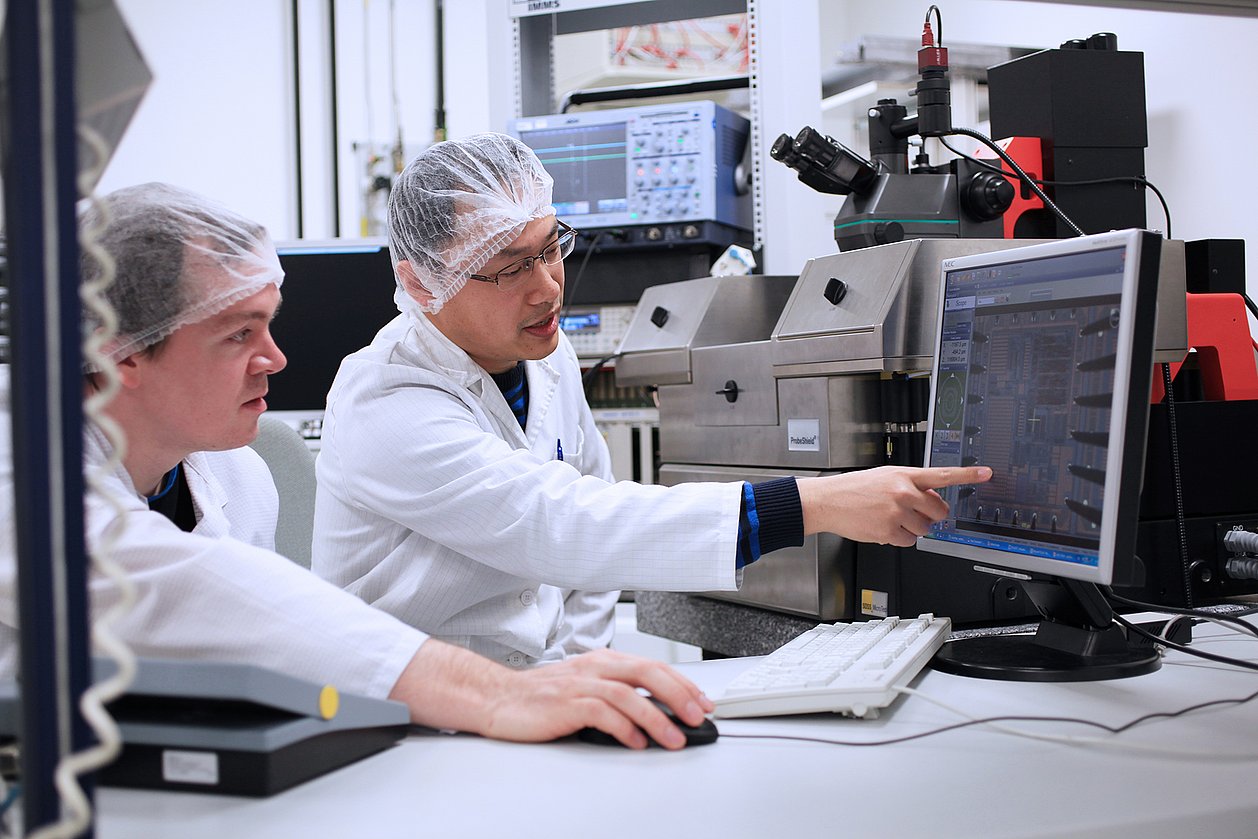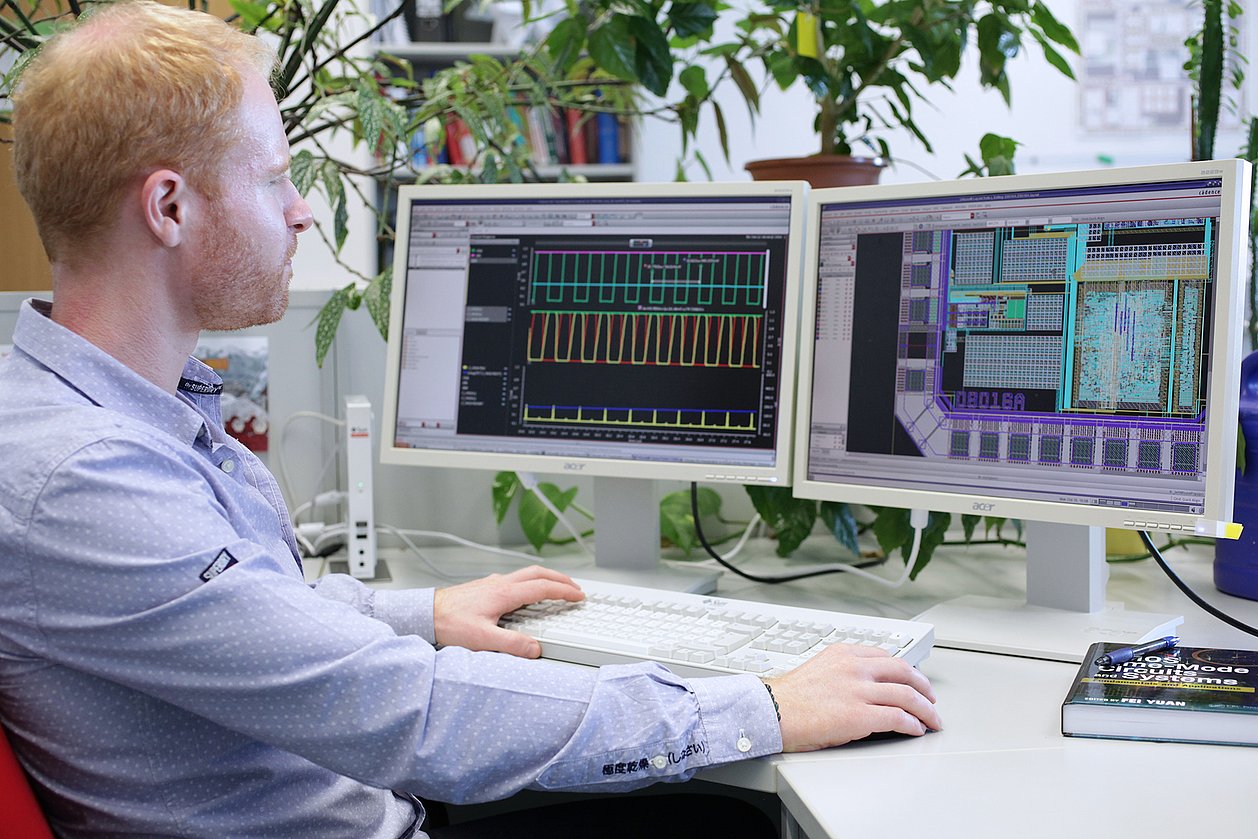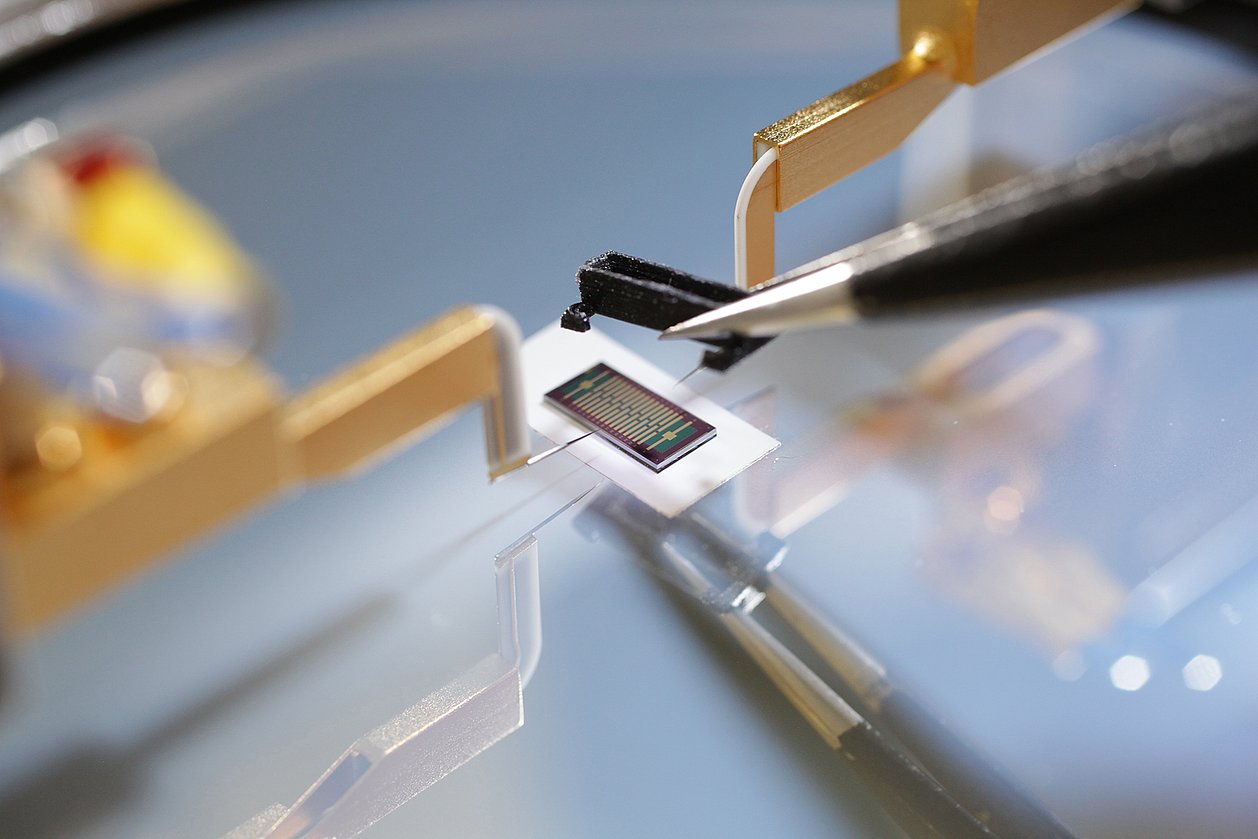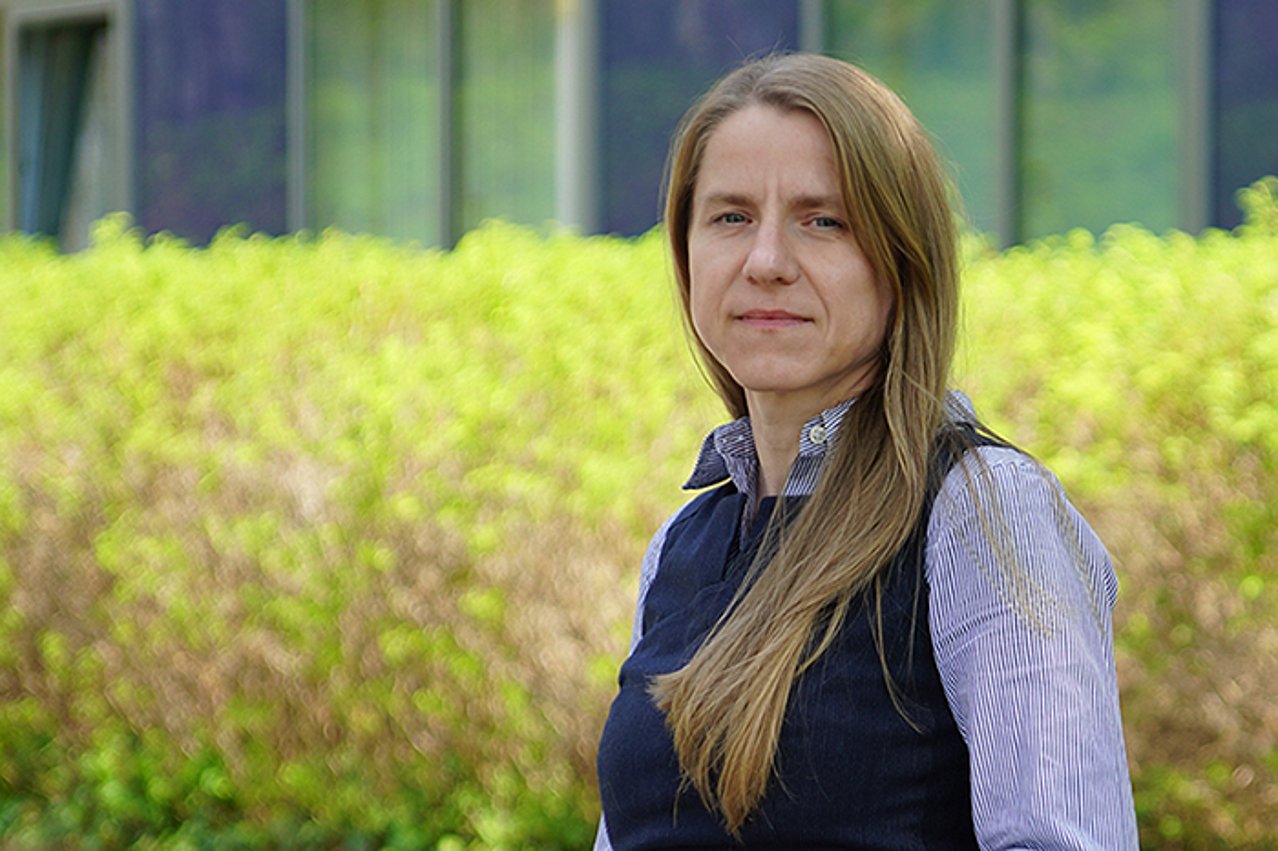POCT
Integration of Chemiluminescence-based SPARCL Assay on Microfluidic Platform with SPAD-based CMOS Line Sensor IC for Rapid Cytokine Detection in CRS
Benjamin Saft, Biljana Gjurova, Pia Scholz, Alexander Zimmer, Mirjam Skadell, Eric Schäfer, Susann Allelein
Abstract:
The speed of cytokine detection is essential for taking life-saving measures quickly in the case of cytokine release syndrome. Therefore, the authors jointly worked on the development of a cost-efficient point-of-care testing platform using SPARCL.
SPARCL (Spatial Proximity Analyte Reagent Capture Luminescence) is a chemiluminescent immunoassay which is producing light proportional to the analyte’s concentration. This light is being captured by our application specific SPAD-based line sensor IC with high sensitivity in CMOS microchip technology. Due to this ASIC, no light source or other optical components (lenses, filters) are required for the system.
The SPAD-based line sensor IC features a high-density sensor array with 192 rows, allowing for spatially-resolved recording of the temporal sequence of light emission within microfluidic channels.
Various filling strategies and concentrations of Acridan-Antibody (Acr-Ab) were explored for chip integration, leading to optimized signal generation. Results demonstrate the efficacy of immobilizing Acr-Ab on the underside of the measurement channel, minimizing nonspecific signals and aligning with microfluidic chipdesign principles. This integration opens avenues for enhanced point-of-care diagnostics, with future research focusing on further sensitivity improvements, clinical validation, and fine-tuning of CMOS microchip parameters.
Related content
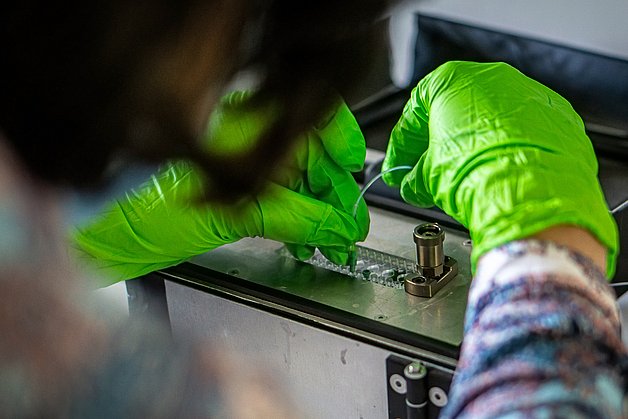
Project
KODIAK
IMMS researches image sensors for chemiluminescence assays with Thuringian industry and institutes from Erfurt-Südost and Jena
This might also be interesting for you
Contact
Contact
Dipl.-Hdl. Dipl.-Des. Beate Hövelmans
Head of Corporate Communications
beate.hoevelmans(at)imms.de+49 (0) 3677 874 93 13
Beate Hövelmans is responsible for the text and image editorial work on this website, for the social media presence of IMMS on LinkedIn and YouTube, the annual reports, for press and media relations with regional and specialist media and other communication formats. She provides texts, photographs and video material for your reporting on IMMS, arranges contacts for interviews and is the contact person for events.


